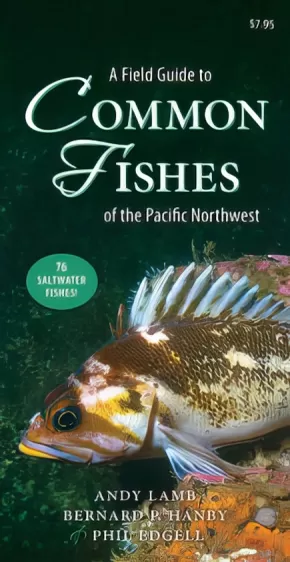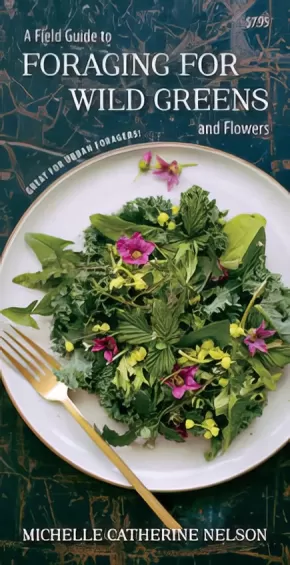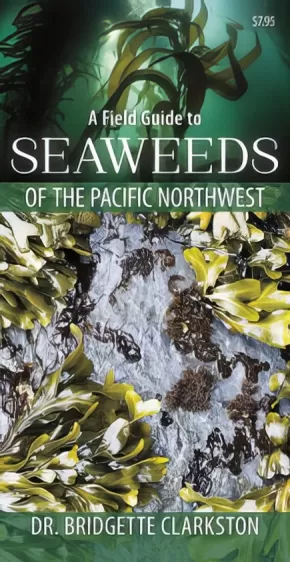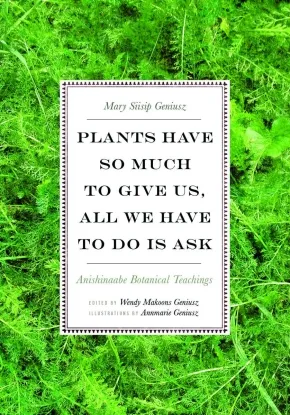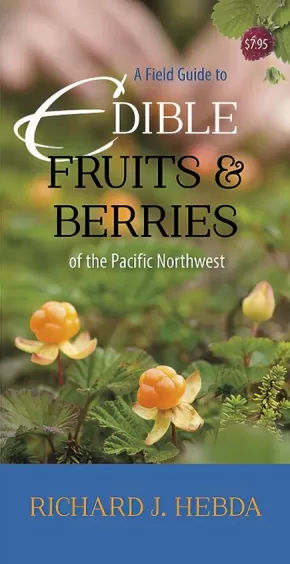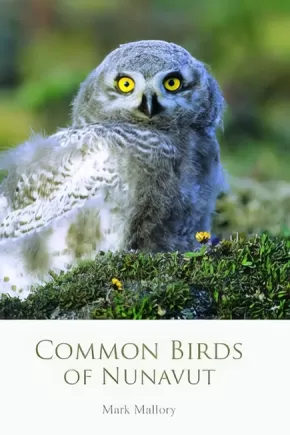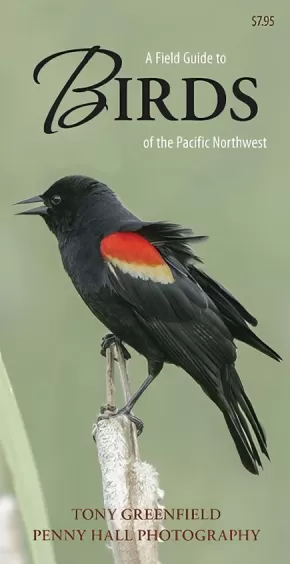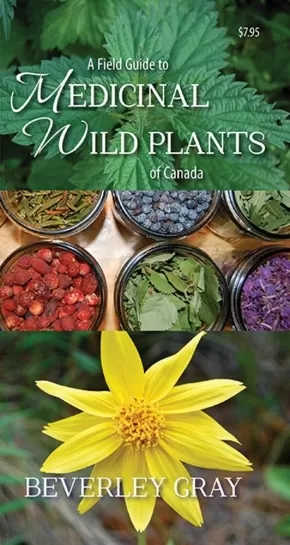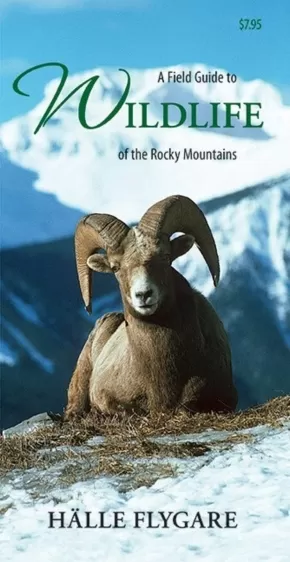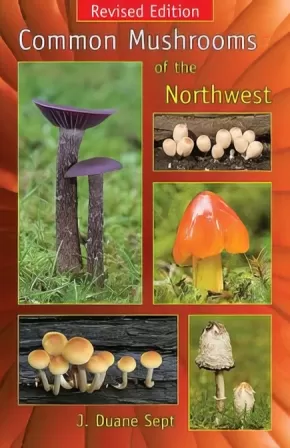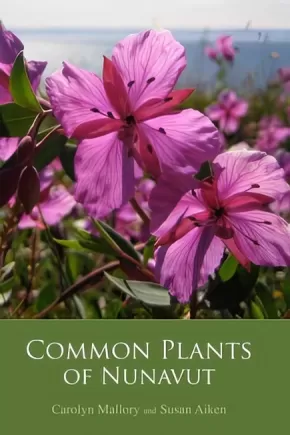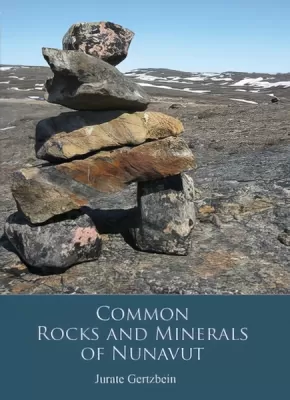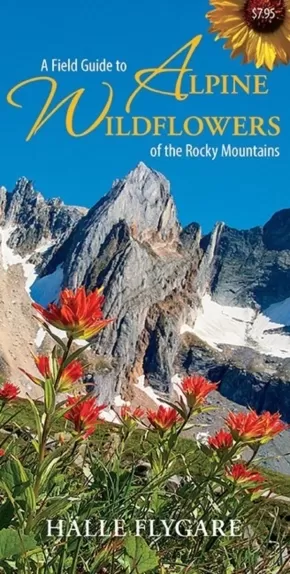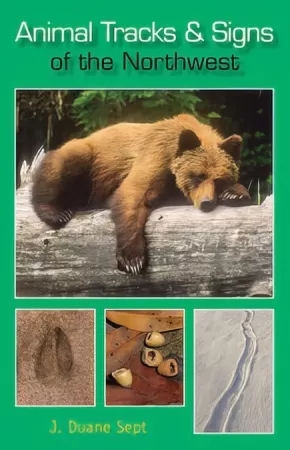Field Guides
Synopsis:
The waters of the Pacific Northwest are home to some of the most unique and diverse marine creatures in the world, including rockfishes, greenlings and, of course, salmon. This full-colour brochure is packed with information on seventy-eight "must-have" common fishes of the Pacific Northwest. A Field Guide to Common Fish of the Pacific Northwest provides a succinct rundown on a huge variety of our fishy neighbours, and is an ideal guide for fishermen, divers and anyone interested in the marine life that fills our surrounding waters.
Synopsis:
A Field Guide to Foraging for Wild Greens and Flowers pinpoints easy-to-find greens and flowers that many don't realize are edible--such as dandelion, clover, chicory, sheep's sorrel and lamb's quarters--and also introduces readers to the delicious leaves of such native plants as goldenrod and fireweed. And readers can also eat their way to conservation by enjoying edible invasive plants in salads, like garlic mustard and fennel. A lightweight pamphlet that will easily fit into a purse or back pocket, this laminated guide will turn every walk from the bus stop, backyard ramble or stroll around the neighbourhood into a fun foraging expedition.
Additional Information
2 pages | 4.60" x 8.80"
Synopsis:
Rich in nutrients, used in products from cosmetics to explosives to fertilizers, and vital to our coastal marine ecosystems, seaweeds can be found on any rocky shore or beach in the Pacific Northwest. The pocket-sized Field Guide to Seaweeds of the Pacifc Northwest is packed with full-colour photos and information on a select variety of the most important and interesting seaweeds commonly encountered on the West Coast. Whether you want to identify seaweeds, better understand their role in the ocean, forage for food, collect for art or you're just plain curious as you poke around the seashore, this educational guide is your ultimate source for casual phycological fun.
Synopsis:
Mary Siisip Geniusz has spent more than thirty years working with, living with, and using the Anishinaabe teachings, recipes, and botanical information she shares in Plants Have So Much to Give Us, All We Have to Do Is Ask. Geniusz gained much of the knowledge she writes about from her years as an oshkaabewis, a traditionally trained apprentice, and as friend to the late Keewaydinoquay, an Anishinaabe medicine woman from the Leelanau Peninsula in Michigan and a scholar, teacher, and practitioner in the field of native ethnobotany. Keewaydinoquay published little in her lifetime, yet Geniusz has carried on her legacy by making this body of knowledge accessible to a broader audience.
Geniusz teaches the ways she was taught—through stories. Sharing the traditional stories she learned at Keewaydinoquay’s side as well as stories from other American Indian traditions and her own experiences, Geniusz brings the plants to life with narratives that explain their uses, meaning, and history. Stories such as “Naanabozho and the Squeaky-Voice Plant” place the plants in cultural context and illustrate the belief in plants as cognizant beings. Covering a wide range of plants, from conifers to cattails to medicinal uses of yarrow, mullein, and dandelion, she explains how we can work with those beings to create food, simple medicines, and practical botanical tools.
Plants Have So Much to Give Us, All We Have to Do Is Ask makes this botanical information useful to native and nonnative healers and educators and places it in the context of the Anishinaabe culture that developed the knowledge and practice.
Additional Information
344 pages | 7.00" x 10.00" | Paperback
Synopsis:
If wild berry foragers followed vague advice such as "berries of red and you'll soon be dead" or "berries of blue will do harm to you" imagine how many of nature's delicacies would be passed by! On the other hand, for anyone who has thought twice before popping that delicious-looking morsel into their mouth, the reality of poisonous berries growing in the wild is reason enough to be berry aware.
With a basketful of information presented on a two-sided, lightweight and pocket-sized pamphlet, A Field Guide to Edible Fruits and Berries of the Pacific Northwest is the perfect resource for wild fruit- and berry-lovers of all ages, whether on a short walk in the woods or a backcountry hiking trip. In addition to more commonly identified specimens such as strawberries, blueberries and blackberries, explore the delicious possibilities of evergreen huckleberries, cloudberries and crowberries, and learn how to tell the edible lingonberry from the poisonous baneberry.
Each entry is illustrated with a colour photograph and accompanied by a brief description and seasonal availability to help identify more than forty kinds of fruits and berries found in the wild, along with information on how best to prepare and preserve the edible ones.
Additional Information
2 pages | 37.00" x 9.00" | field guide with 50 colour photographs
Synopsis:
Explore the fascinating world of Nunavut's diverse bird populations in this richly visual, informative book.
Through beautiful photographs and a broad range of information, readers will learn about the appearances, traditional uses, and behaviours of Arctic birds. With detailed information on more than 50 species, this book provides an in-depth look at Arctic birds.
Far from a barren land of ice and snow, this book will introduce readers to the vibrant natural life of Nunavut through its distinct ornithology.
Educator Information
While mainly a book about birds in Nunavut for young adults (pre-teens or teens) and adults, this resource also contains cultural information about the Inuit, including the Inuit's relationship to Nunavut birds, such as the value and uses of these birds, the Inuktitut names for birds, as well as local ecological knowledge.
This resource is also available in French: Les oiseaux du Nunavut
Additional Information
174 pages | 9.00" x 6.50"
Synopsis:
Do you know a tanager from a towhee? A goatsucker from a grosbeak? Here, after much demand, is a waterproof, portable 8-fold guide featuring 112 photos of the common birds found in coastal areas of Oregon, Washington, British Columbia and Alaska. Each species is labelled with common name, size, distribution range and favoured habitat. This full-colour pamphlet is useful to anyone who has an interest in taking up birdwatching, or just wants to figure out what's flitting about the birdfeeder.
Additional Information
2 pages | 37.00" x 9.00" | field guide with 112 colour photographs
Synopsis:
Nature heals! This compact field guide introduces readers to 26 common Canadian wild plants with extraordinary healing properties. Use arnica blossoms to heal muscle inflammation, improve digestion with chickweed and soothe a toothache with yarrow root--learning to identify and use wild medicinal plants is both fascinating and useful.
Each plant profile includes a colour photograph, identification and habitat information, as well as medicinal, cosmetic and culinary uses. Skilled herbalist Beverley Gray also includes tips on how to sustainably gather and safely use beneficial wild plants.
Additional Information
2 pages | 4.50" x 8.70" | 30 photographs | Pamphlet
Synopsis:
Was that a lynx or a bobcat? A nuthatch or a chickadee?
A Field Guide to Wildlife of the Rocky Mountains is a must-have for any visitor to the Rocky Mountain region of British Columbia, Alberta, Montana and Idaho.
Featuring over a hundred superb full-colour photos, this pamphlet provides an essential look at the variety of animals one is most likely to encounter on the area's park trails and roadsides. Information on the size of each animal, as well as the common and Latin names makes it easy to identify wildlife. Similar species are grouped by appearance for easy comparison. Handy on the trails, this field guide is also the perfect souvenir of the abundance of wildlife to be found in the Rocky Mountains.
Additional Information
2 pages | 4.60" x 8.80" | 105 Colour Photographs
Synopsis:
This easy-to-use handbook offers information about common mushrooms from Alaska and northwestern Canada to Saskatchewan in the east and south to the US states of the Pacific northwest. Using crisp, colourful images, Duane Sept illustrates more than 130 species of edible, poisonous and other interesting mushrooms. Inside you’ll find:
~ In depth descriptions for 130 species
~ Details on edible, poisonous, hallucinogenic and other fascinating fungi
~ More than 150 fascinating fungi
~ More that 150 spectacular photographs
~ Tips and techniques for freezing, canning and drying mushrooms
~ Additional information about mushroom ecology, making spore prints and more
~ New edition includes updated scientific names and new species
Synopsis:
Explore the fascinating world of Nunavut’s varied plant life in this richly visual, informative book.
Through beautiful photographs and a broad range of information including traditional knowledge about plant use compiled through interviews with Inuit elders readers will learn about the appearances, adaptations, life cycles, and habitats of the diverse array of plants that live in the North.
Far beyond a barren land of ice and snow, this book will introduce readers to the beautiful variations of plant life that abound on the tundra.
Additional Information
205 pages | 9.00" x 6.50"
Synopsis:
Explore the fascinating world of Nunavut’s diverse rocks and minerals in this richly visual, informative book.
Through beautiful photographs and a broad range of information—with absorbing “Did You Know?” facts to accompany every account—readers will learn about the appearances, traditional and modern uses, and environments of eastern Arctic rocks and minerals. Covered in this book is everything from diamond to granite, from the most precious to the most common stone.
Readers will learn about rocks and minerals, as well as how their use has been important to the survival of the Inuit.
Far from a barren land of ice and snow, this book will introduce readers to the vibrant natural life of Nunavut through its distinct geology.
Additional Information
242 pages | 6.50" x 9.00"
Synopsis:
With gorgeous full-colour photos arranged in an easy-to-use colour-coded chart for quick identification, this pocket-sized laminated pamphlet is perfect for taking along on walks and hikes through the Rocky Mountains, from BC and Alberta to New Mexico. Supplying English and Latin names, the distribution range of each species and average plant height and flower size, Halle Flygare shares his knowledge and pictures of flora gained through over 30 years as a photographer, park warden and guide in the Rocky Mountains.
Additional Information
2 pages | 4.50" x 9.00" | 112 Colour Photographs
Synopsis:
This laminated guide features twenty-six native trees commonly found from Alaska to Oregon, providing common and Latin names accompanied by colour photographs of identifying features such as bark, leaves or needles, flowers, cones, seeds and fruit. Information on identification, range and an illustration of each tree's silhouette make it a snap to distinguish a shore pine from a western white pine or a trembling aspen from a paper birch. Also included are traditional uses and other interesting tree facts and lore. For example, did you know that yellow cedar can live up to 5,000 years? Or that the bigleaf maple flowers are edible? Next time you go for a hike, pay attention to the forest and the trees with one of these laminated guides slipped into your back pocket or backpack.
Additional Information
2 pages | 37.00" x 9.00" | color photographs and illustrations | pamphlet
Synopsis:
Welcome to the secret world of tracks, sign and the animals that made them. Signs of the who, what and where of wildlife are all around us, even when their makers are too shy to come closer. This new guide is the key to unlocking the natural world that shares our environment, by day and by night. All we have to do is take the time to observe and interpret the signs.
The book features nearly 50 species with photos of tracks, scat and other signs, as well as drawings of tracks, track patterns, distribution maps and interesting details on the appearance, habitat and behavior of each species. Information on 20 additional species is also included, to help identify other species in the area and to distinguish one animal from another. There is even a ruler on the back cover. Tracking is detective work—fun, stimulating and very inspiring for anyone who is ready to “meet” the animals that share our landscape, by studying the fascinating clues they leave behind.

